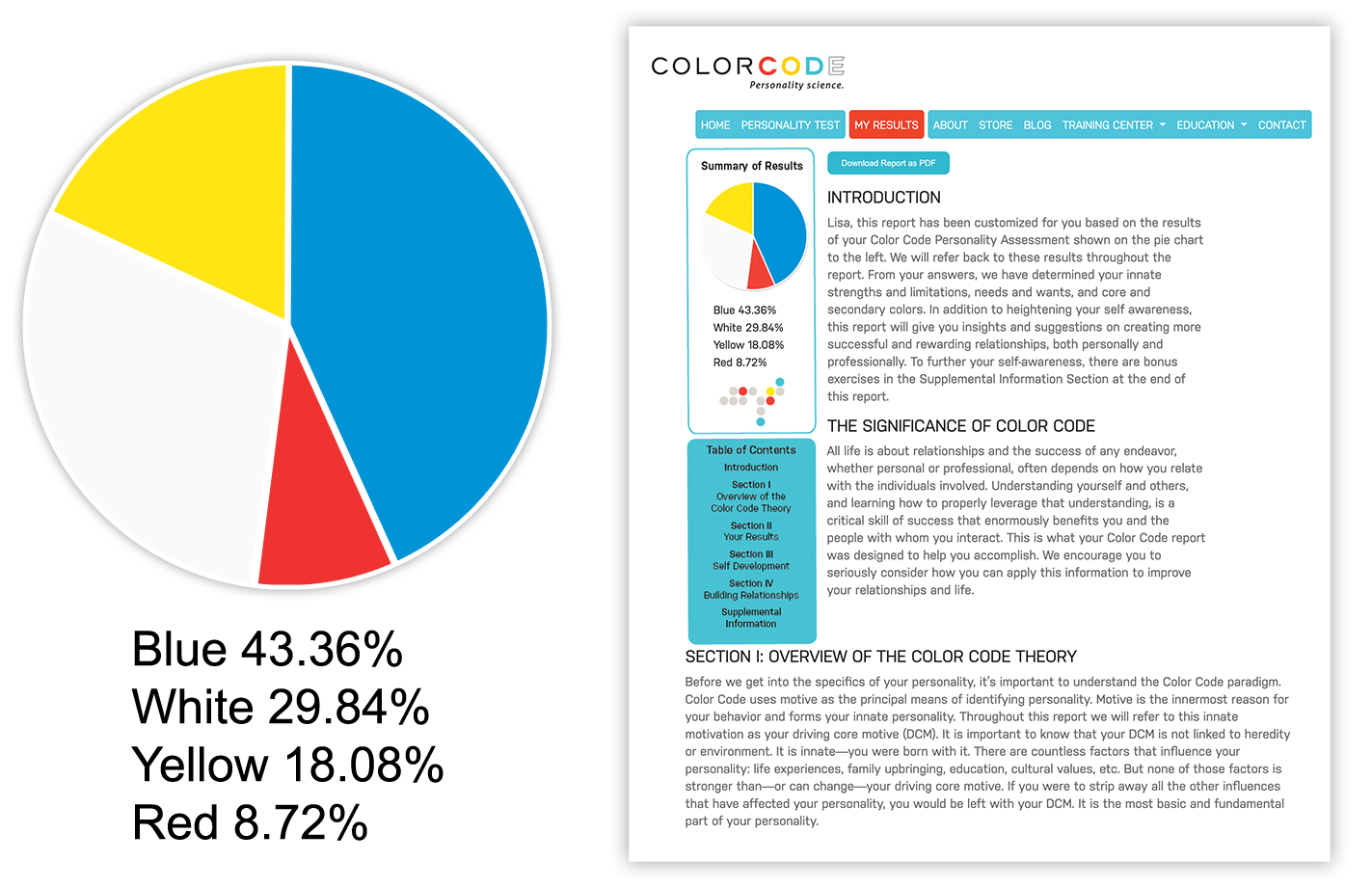Timid is a LIMITATION of the WHITE personality in the Color Code Personality Assessment.
Timid
"Necessity makes even the timid brave."
― Sallust
Lisa Ulshafer / 
Do you often feel too shy or nervous to speak up in social situations? Do you wish you could be more confident and assertive? Being timid is a personality trait characterized by a lack of confidence, shyness, and hesitancy in taking action or expressing oneself. Timid individuals often struggle with self-doubt and may avoid taking risks or stepping out of their comfort zone. They may feel anxious or apprehensive in social situations and may struggle with assertiveness or standing up for themselves.
Here are some common signs that you may be timid:
- Avoiding eye contact with others
- Having trouble speaking up in groups or expressing your opinion
- Feeling nervous or anxious in social situations
- Being overly self-conscious or self-critical
- Hesitating to take risks or try new things
- Struggling to assert yourself in personal or professional situations
- Avoiding confrontations or difficult conversations
- Preferring to stay in the background rather than taking a leadership role
- Second-guessing yourself or doubting your abilities
- Having difficulty making decisions, especially under pressure.
Here are 10 strategies for overcoming being timid:
- Build self-confidence: Work on developing a positive self-image and practice self-affirmation. Focus on your strengths and accomplishments to boost your self-esteem.
- Challenge negative beliefs: Identify and challenge any negative beliefs or thoughts that contribute to your timidity. Replace them with more positive and empowering beliefs.
- Set small goals: Start by setting and achieving small, manageable goals that push you slightly out of your comfort zone. Celebrate your successes to build your confidence.
- Practice assertiveness: Learn and practice assertive communication skills, such as expressing your thoughts and feelings clearly and respectfully. Role-play assertive scenarios to build your confidence in expressing yourself.
- Face fears gradually: Gradually expose yourself to situations or activities that make you feel timid or anxious. Start with small steps and gradually work your way up, building your tolerance for discomfort.
- Seek support: Surround yourself with supportive and encouraging individuals who can provide positive feedback and help you overcome your timidity.
- Develop resilience: Learn to bounce back from setbacks and failures. Embrace a growth mindset and view challenges as opportunities for learning and growth.
- Practice self-care: Take care of your physical, emotional, and mental well-being. Engage in regular exercise, get enough sleep, eat healthy, and practice stress-management techniques to improve your overall resilience.
- Cultivate assertive body language: Pay attention to your body language, such as maintaining eye contact, standing or sitting tall, and using confident gestures. These can help you appear more confident and assertive.
- Take ownership of your decisions: Make decisions based on your values, needs, and desires, and take ownership of them. Avoid seeking excessive reassurance or approval from others, and trust your own judgment.
Overcoming timidity can lead to a life that is bold, confident, and filled with new possibilities. When you overcome timidity, you can embrace life with courage, self-assurance, and assertiveness. It involves stepping out of your comfort zone, facing your fears, and taking action despite feeling anxious or uncertain. You can set healthy boundaries, speak up for yourself, and pursue your dreams with confidence and determination. It can lead to improved self-esteem, greater resilience, and a more fulfilling life where you are not limited by your fears or self-doubt. Overcoming timidity can result in more meaningful connections, greater opportunities, and a sense of accomplishment. By overcoming timidity, you can embrace a more empowered, confident, and fulfilling life where you are not held back by fear or self-doubt, but rather empowered to pursue your dreams and live life to the fullest.
Timid
"Necessity makes even the timid brave."
― Sallust

Do you often feel too shy or nervous to speak up in social situations? Do you wish you could be more confident and assertive? Being timid is a personality trait characterized by a lack of confidence, shyness, and hesitancy in taking action or expressing oneself. Timid individuals often struggle with self-doubt and may avoid taking risks or stepping out of their comfort zone. They may feel anxious or apprehensive in social situations and may struggle with assertiveness or standing up for themselves.
Here are some common signs that you may be timid:
- Avoiding eye contact with others
- Having trouble speaking up in groups or expressing your opinion
- Feeling nervous or anxious in social situations
- Being overly self-conscious or self-critical
- Hesitating to take risks or try new things
- Struggling to assert yourself in personal or professional situations
- Avoiding confrontations or difficult conversations
- Preferring to stay in the background rather than taking a leadership role
- Second-guessing yourself or doubting your abilities
- Having difficulty making decisions, especially under pressure.
Here are 10 strategies for overcoming being timid:
- Build self-confidence: Work on developing a positive self-image and practice self-affirmation. Focus on your strengths and accomplishments to boost your self-esteem.
- Challenge negative beliefs: Identify and challenge any negative beliefs or thoughts that contribute to your timidity. Replace them with more positive and empowering beliefs.
- Set small goals: Start by setting and achieving small, manageable goals that push you slightly out of your comfort zone. Celebrate your successes to build your confidence.
- Practice assertiveness: Learn and practice assertive communication skills, such as expressing your thoughts and feelings clearly and respectfully. Role-play assertive scenarios to build your confidence in expressing yourself.
- Face fears gradually: Gradually expose yourself to situations or activities that make you feel timid or anxious. Start with small steps and gradually work your way up, building your tolerance for discomfort.
- Seek support: Surround yourself with supportive and encouraging individuals who can provide positive feedback and help you overcome your timidity.
- Develop resilience: Learn to bounce back from setbacks and failures. Embrace a growth mindset and view challenges as opportunities for learning and growth.
- Practice self-care: Take care of your physical, emotional, and mental well-being. Engage in regular exercise, get enough sleep, eat healthy, and practice stress-management techniques to improve your overall resilience.
- Cultivate assertive body language: Pay attention to your body language, such as maintaining eye contact, standing or sitting tall, and using confident gestures. These can help you appear more confident and assertive.
- Take ownership of your decisions: Make decisions based on your values, needs, and desires, and take ownership of them. Avoid seeking excessive reassurance or approval from others, and trust your own judgment.
Overcoming timidity can lead to a life that is bold, confident, and filled with new possibilities. When you overcome timidity, you can embrace life with courage, self-assurance, and assertiveness. It involves stepping out of your comfort zone, facing your fears, and taking action despite feeling anxious or uncertain. You can set healthy boundaries, speak up for yourself, and pursue your dreams with confidence and determination. It can lead to improved self-esteem, greater resilience, and a more fulfilling life where you are not limited by your fears or self-doubt. Overcoming timidity can result in more meaningful connections, greater opportunities, and a sense of accomplishment. By overcoming timidity, you can embrace a more empowered, confident, and fulfilling life where you are not held back by fear or self-doubt, but rather empowered to pursue your dreams and live life to the fullest.
Change can be challenging and difficult to do all on your own.
Contact Lisa today to make the kind of changes in your life that lift you to your greatest potential.

2 Free Template Downloads
#1. Developing Strengths & Becoming Charactered
#2. Removing My Limitations
Fill out the form below to receive your free templates:
Click to explore the Strengths & Limitations of each color:
FULL Analysis
A completely customized report that is designed to fully analyze your personality and provide bonus tools to help you on your way to personal development.
Results Include:
- Pie chart showing you what you scored in all 4 colors.
- Comprehensive analysis containing 35+ page report with customized content that describes your individual personality style in depth.
- List of your innate strengths and limitations.
- A breakdown of secondary colors and how they affect your personality.
- Throughout are videos, activities and other tools embedded to help you more fully understand your results.



